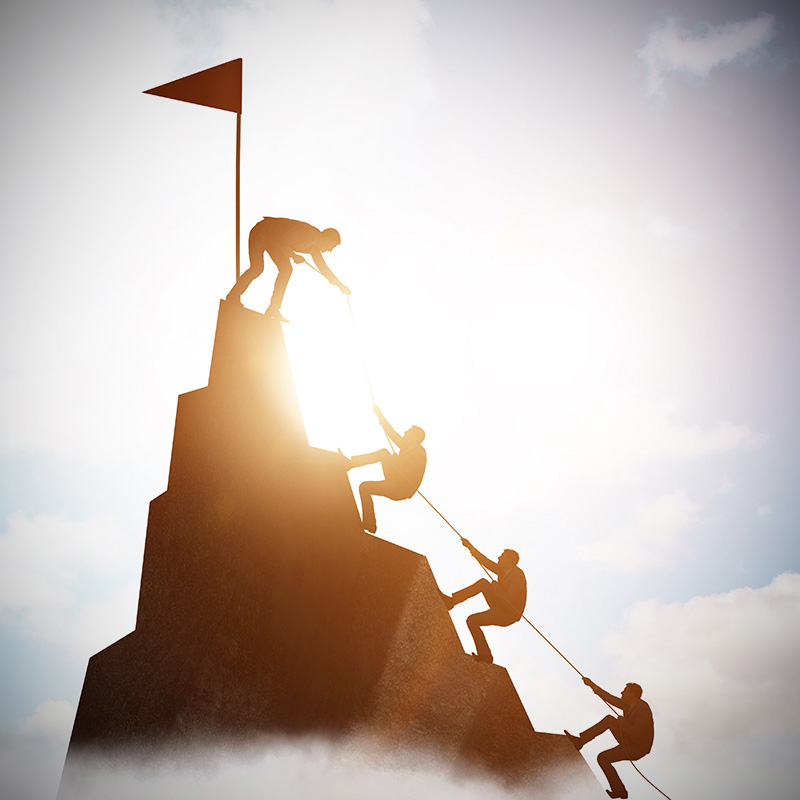Building your Safety Team for Success

Successful companies know that when employees work as a team, it increases employee retention and revenue. It also creates a positive work atmosphere where everyone feels included.
Creating a safety team or committee for an organization is essential to providing a safe work environment for employees and the company’s compliance with state safety rules.
Employees that work as a team will help to improve the overall safety culture and demonstrate management’s commitment to safety as a priority. Teams are a crucial component of a business’ safety management system.
To some, establishing a team-based safety program may seem like an overwhelming responsibility that would require too much effort. Creating an environment where safety is more than just a set of policies can bring out the best in individuals and departments.
A team approach can transform an adequate safety program into a genuinely outstanding one, inspire workers, and help set a precedent for high achievement in other areas of a company.
Besides enhancing communication practices and providing professional development opportunities, these seven ideas can help start the process.
Encourage a Climate of Communication
Initiate frequent conversations about safety outside the parameters of formal meetings. Make safety the go-to topic whenever the opportunity presents itself.
Team leaders and managers should demonstrate by example that discussions about safety are a top priority and that input from everyone in the organization is valued. In safety discussions, focusing on what is working well is as important as reviewing problematic issues. Safety communication is a two-way street—not a directive from management. Everyone should know their input has value.
Establish Values and Context
Creating a safety program that demonstrates value and context requires consistency in training, operations, and feedback.
Employers must explain the obvious reasons a successful safety program is essential and communicate why their safety program applies to their particular workplace, industry, and bottom line.
Defining the roles of individuals and teams within the organization will provide a framework to move forward.
Establishing new corporate values, or updating existing ones, can be effective ways to launch a team-empowered program. Facilitating training that reflects these values and industry standards will help reinforce a team-based approach to safety.
Foster Learning and Creative Approaches to Safety
Employers who continually correct their team with a “my way or the highway” approach create a work setting where the employees lack confidence and continuously seek approval before initiating actions.
Conversely, environments that encourage employees to test new ideas related to their safety program will encourage innovation while developing a sense of ownership. Fostering a culture where employees are encouraged to take calculated risks without the fear of reprimand is vital.
Consider creating an individualized learning plan for each employee based on their personal needs, interests, and corporate requirements.
Inspire Individuals
A good manager knows that employees are not motivated by money alone. Consider alternate methods of encouraging and rewarding individual and team-based success relating to your safety program. Create a variety of objectives that creatively reward, such as recognizing safety milestones.
While it is essential to recognize the team as much as possible, the team members must be acknowledged for their progress.
Encourage Independence and Accountability
Every employee must be accountable to the company’s safety program and have a sound understanding of the consequences of failing to meet its requirements.
Management should expect all workers to be consistently accountable. A lack of accountability among just a few employees can spread and infect the entire organization.
Accountability shouldn’t be an entirely top-down process. Encourage workers to take the lead in holding others accountable, which will encourage the team’s buy-in and participation in the safety program and help develop employee leadership skills. Accountability includes all relevant paperwork. While regularly preparing and submitting reports can seem a bit dull, it is a cornerstone of the company’s safety program.
Thank Workers and Celebrate Their Successes
There are many ways to reward your team’s successes, including financial bonuses, organizing extra-curricular activities, featuring success stories in company publications, and providing recognition at special events. Sometimes, however, the most gratifying reward is a sincere “thank you” from the team leader, manager, or company owner, especially in front of the employee’s peers.
Making a big deal out of small wins is good too. Thank the group and each team member involved. A celebration or even a simple expression of gratitude is a great way to show how your team-based safety program is critical to your corporate values and success.
Make Safety Part of Your Corporate Brand
Translate the success of the company’s team-empowered safety program into an operational advantage. An outstanding safety record gives more than just bragging rights. This value-added equity can easily be leveraged to sell company products, enhance proposals, and recruit employees.
Don’t make it a secret. Let everyone involved know that their efforts have far-reaching impacts beyond reducing safety incidents.
Wrapping it up
The ability to build an effective team-led safety program is not out of reach. Everyone in the company can contribute to its success, so be as inclusive as possible in all aspects of the program development.
Create user-friendly systems to encourage participation from all workers in all aspects, from the reporting of safety incidents to marking success milestones. Open communication should be a top priority.
Empowering your team to participate in your company’s safety program is the first step to countless future team-led success stories.
Rick Means, Director of Safety and Education, is available to help members with safety. Contact Rick at 360-943-9198, Ext. 118 or [email protected].





